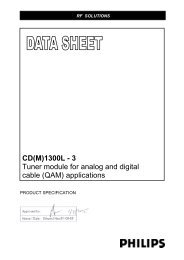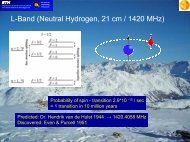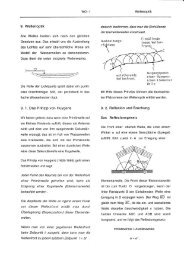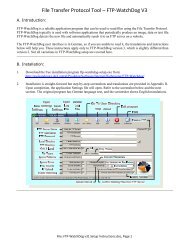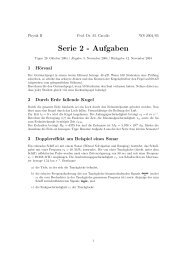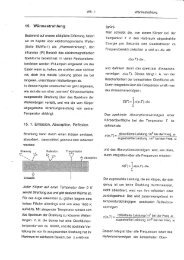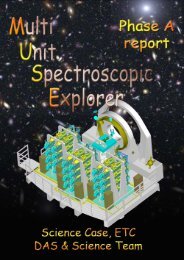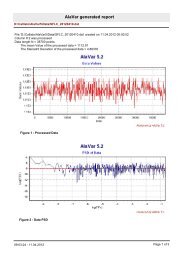Chapter 3: THE FRIEDMANN MODELS
Chapter 3: THE FRIEDMANN MODELS
Chapter 3: THE FRIEDMANN MODELS
You also want an ePaper? Increase the reach of your titles
YUMPU automatically turns print PDFs into web optimized ePapers that Google loves.
gravitational effects of uniformly distributed distributions of mass allow us to<br />
consider only the mass enclosed within the sphere of radius x = R(τ)ω OA centered on<br />
O whan calculating the gravitational attraction between O and A..<br />
O<br />
x<br />
A<br />
Thus if x is the distance OA, then we have<br />
(3.2) &&x =− 4 π<br />
G ρ x<br />
3<br />
Now, since the comoving distance to A from O, ω OA , is by definition constant during<br />
the expansion, we can write:<br />
x = Rω ⇒ x& = R& ω ⇒ x&& = R&&<br />
ω<br />
OA OA OA<br />
We may thus rewrite our dynamical equation in terms of R(τ) alone, thus eliminating<br />
reference to any particular galaxy or distance x.<br />
(3.3) R && 4π<br />
=− Gρ<br />
R<br />
3<br />
So, the dynamics of our shell of material are the same as the dynamics of the whole<br />
Universe. In a sense, this is then the justification for the Newtonian approach since we<br />
can make our radius r arbitrarily small so that curvature and light travel time effects<br />
are completely irrelevant.<br />
To integrate this equation we need to know how ρ behaves as functions of R(τ), i.e.<br />
we need to know the equation of state of the matter-energy in the Universe. For the<br />
time being lets assume it is simple pressure-less matter (known as “dust”) that evolves<br />
as ρ ∝ R -3 .<br />
We adopt the convention of putting in square brackets quantities that are invariant<br />
under the expansion. If we multiply both sides by & R and set [ρR 3 ] = constant, then we<br />
have




